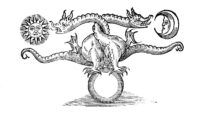“Be here now,” wrote the late Richard Alpert, aka Baba Ram Dass, fellow researcher of psychedelics and consciousness at Harvard University with Timothy Leary in the 60’s, and self-made mystic sage. His instruction is easier said than done, since now is a timeless transition of no duration; perhaps that was his point. The remarkable thing about now is that it’s as close as we can get to the experience of eternity, itself a timeless transition of infinite duration.
Human beings we are, and being is what we do. We can’t escape the present moment, but we can forget, ignore, or distract ourselves from it. In a process philosopher Henri Bergson described, “our perception manages to solidify into discontinuous images the fluid continuity of the real.” In other words, we fixate on particular moments and objects rather than experiencing the flow of time. We fixate on being rather than becoming.
In 1966 the Beatles sang, “Turn off your mind, relax and float downstream.” This mirrors the pith instruction of Dzogchen Buddhism as well as that of “Row, Row, Row Your Boat,” the childhood ditty which advises navigating life “gently.” Relaxing into the eternal present – “profound illumination,” – is how the Heart Sutra describes the meditation of the Buddha, “perception of the profound in the enumeration of phenomena.” In other words, constant awareness of becoming, the continuity of the real.
Discerning continuity taps archetypes. Clotho, the youngest sister of Greek mythology’s three Fates, spins the threads woven into the cloth of time. So too, the three Norns of Scandinavian mythology. Weaving, art historian Kurt von Meier notes, may harken all the way back to Homo erectus, an early human, who using woven plant material developed baskets and the “concept of transporting food-stuffs to the home base for sharing within an organized social group. It is for this explicit function that we believe weaving emerged as one of the essential crafts of mankind…”
It’s not a great leap from weaving, braiding and basket-making to quipu, the knotted string system of records and accounting used by the Incas. And from quipu, it’s just a veritable hop, skip, and a jump to digital computers and atomic clocks. So it is that human intellect makes distinctions: divides, names, and makes objects out of the indivisible totality of the real and then seeks to utilize or annihilate such bits and pieces.
It’s difficult to place ourselves within the perpetual flux of reality; to do so loosens ego’s grip as it tries to stop the world and arbitrarily fragment it into fixed utilitarian objects and “things,” seconds, minutes and hours, childhood, adolescence, adulthood, and old age. Such distinctions are mere social constructs; so discovered Alpert and Leary, recovering anew the transcendent wisdom of the ancients.
The reality of becoming is sensible, not intellectual; the moment we try to pin it down it slips away, like trying to grab smoke with our hands. Leary famously suggested “Turn on, tune in, drop out” – not instructions about taking drugs, he explained, but advice to “activate your neural and genetic equipment…interact harmoniously with the world…engage a graceful process of detachment.” To feel becoming, advised the ancients, we should relax, let go of our habitual fixations and attachments, even our fixation on relaxing. “There is no birth and no cessation,” says the Heart Sutra, “no increase or decrease.” I might add – no being, just becoming.






Be First to Comment